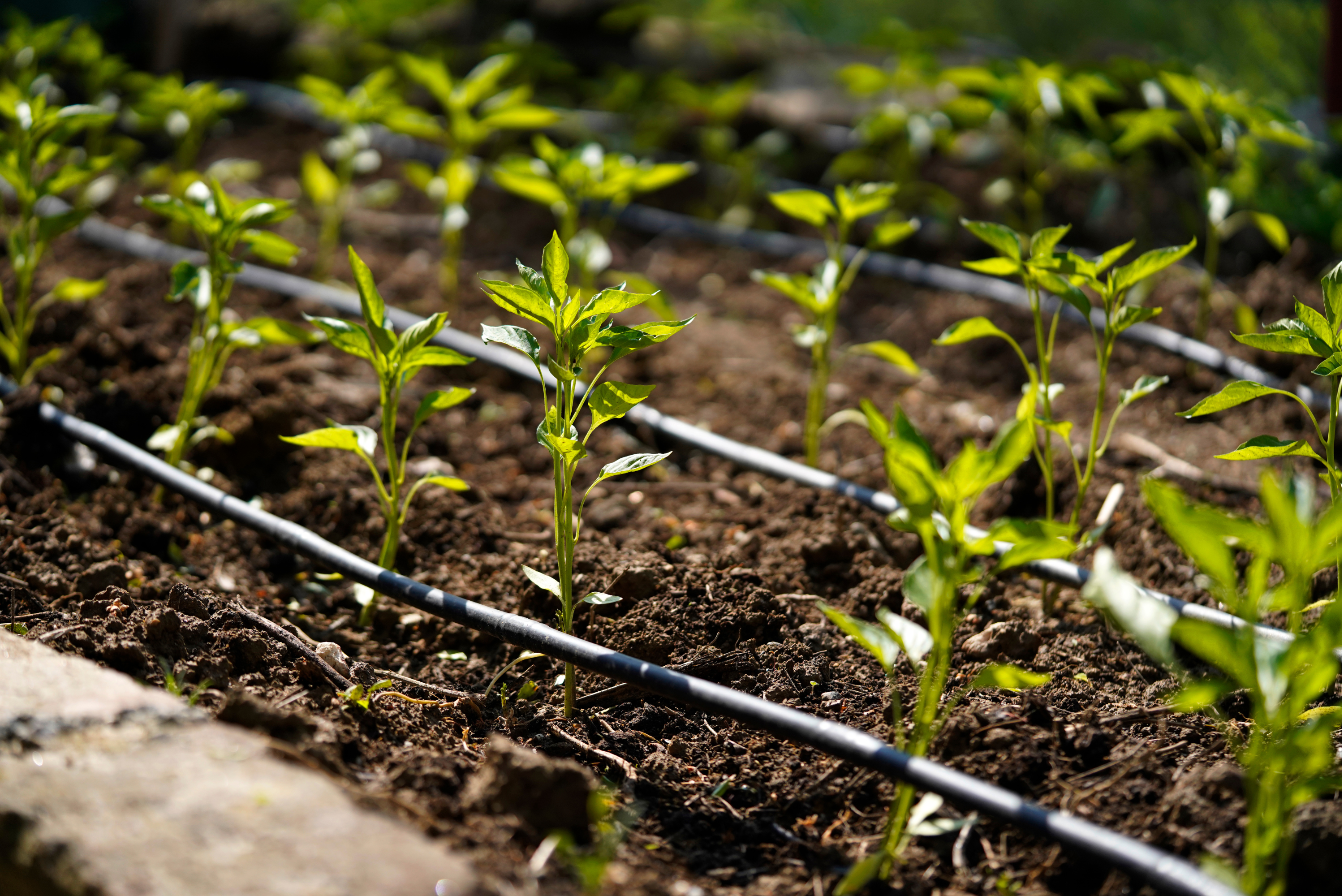
Drip Irrigation: Precision Watering for Productive Plants
Looking for a low-waste, high-efficiency way to water your crops or garden beds? Drip irrigation might be your new best friend. It’s the gold standard for conservation-minded homesteaders, delivering water right where plants need it—slowly and steadily at the roots.
Whether you’re growing tomatoes in raised beds or managing an orchard, drip irrigation can help you grow more with less.
How It Works
Drip irrigation systems use a network of small tubes and emitters to release water directly into the soil near the base of each plant. Water is applied slowly and consistently, reducing evaporation and runoff. The system runs on low pressure, and many setups can even work via gravity from an elevated tank.
There are two main types:
-
Drip tape – flexible tubing with pre-spaced holes, ideal for rows of vegetables
-
Emitter tubing – sturdier lines with customizable drip emitters, perfect for perennials and orchards
Pros
-
Water-efficient: Delivers water right to the root zone with minimal waste
-
Reduced weed growth: Dry soil between plants discourages weeds
-
Healthier plants: Keeps foliage dry, reducing disease
-
Scalable: Works for backyard gardens or multi-acre specialty crop farms
Cons
-
Initial setup takes time: You’ll need to map out your beds and emitter spacing
-
Lines can clog: Especially with hard water or unfiltered well/surface water
-
Requires maintenance: Filters, pressure regulators, and emitters must be checked regularly
-
Not ideal for frost-prone zones: Buried or frozen lines can crack in winter
Best For
-
Garden beds, greenhouses, and hoop houses
-
Vine crops, fruit trees, berries, and herbs
-
Areas with limited water or high evaporation
-
Homesteaders focused on sustainability or organics
Equipment Needed & Water Rights
Equipment Needed:
-
Drip tubing or drip tape (with emitters or punch-in types)
-
Mainline supply tubing (usually 1/2" or 3/4" polyethylene)
-
Filter to keep debris from clogging emitters
-
Pressure regulator to reduce flow for drip lines
-
Timer or manual valve to control watering duration
-
Optional: Fertilizer injector (for fertigation)
Water Rights:
Drip systems use less water—but you still need the legal right to use it!
-
Groundwater users: If you're pulling from a well, confirm your irrigation allowance with your state water board
-
Surface water users: Even small-scale diversions from streams or ponds often require a permit
-
Rain catchment: Some states allow stored rainwater to be used for drip irrigation (check for limits).
Always file for a small irrigation permit if required and be sure to track usage in areas with seasonal caps.
Homesteader Tips
-
Start with a kit: Many drip systems come in DIY kits with everything you need for a garden or orchard
-
Use mulch over lines: Keeps soil moist and protects tubing from sun damage
-
Flush your lines regularly to prevent mineral buildup
-
Install shut-off valves on each bed or row for better control
-
Use rain barrels or elevated tanks to gravity-feed smaller systems off-grid
Drip irrigation might seem fussy at first, but once it’s in place, it’s one of the easiest and most sustainable ways to keep your plants happy. Less waste, fewer weeds, and more control? That’s a win for any homestead.
Up next: Flood Irrigation: Turning a Little Water into a Lot of Growth
Share


